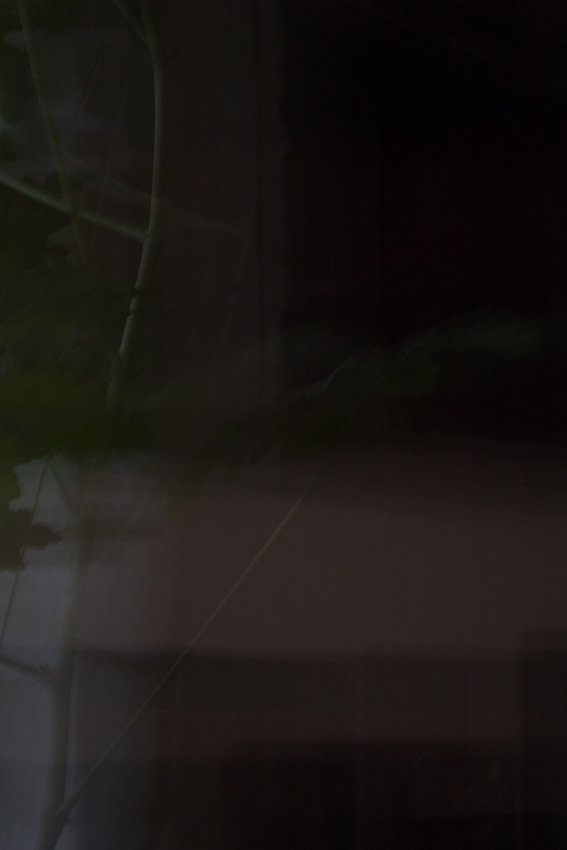
Łukasz Stokłosa’s studio
Anna Stankiewicz Małopolski Instytut Kultury w Krakowie Łukasz Stokłosa interviewed by Martyna Nowicka M N: One of (...)Łukasz Stokłosa interviewed by Martyna Nowicka
M N: One of the reasons I wanted to talk to you about your work in the studio is the fact that of all the artists I know, you combine your private life with your artistic work most radically. Am I right that, in your case, you combine home and your studio out of choice and not necessity?
Ł.S.: Definitely. I like to have my studio close at hand and I find working anywhere else difficult to imagine. I bet that if I worked away from home, I would quickly make my studio into a home.
M.N.: Do you work so much?
Ł.S.: First of all – I’d say irregularly. To paint, I need a concept and the mood. There are some weeks when I’m ready to work most days, but it also happens that no new painting comes in a fortnight. I could also say that this irregularity concerns the time of the day, but that’s not true as I mostly work at night, more or less from 10pm to 6am. Sometimes of course I just paint, but recently I’ve worked more on large compositions, and part of my work is sitting in front of a painting for an hour or two, considering what to do with the composition. I find it most comfortable to work like that from home, and I cannot imagine going somewhere to sit and look – although obviously I know that there are artists who work like this. Although recently I began to ask myself whether I actually live in the studio or work at home?
M.N.: And what answer did you give yourself?
Ł.S.: It looks like I live in a studio, with painting having taken over control long ago.
M.N.: You paint in your bedroom.
Ł.S.: And this room, the quasi-studio is also the living room. Everything is multifunctional here.
M.N.: Don’t you have that feeling that painting is consuming you and takes up too much space? At 6am, don’t you dream about closing a door behind you, having breakfast, and not looking at the paintings anymore?
Ł.S.: No. If I’m fed up with a painting, I simply take it off the wall, lock up in here and leave it. I believe painting consumed me long ago. I don’t think about it, I don’t need a holiday from it. I don’t reflect on the presence of paintings in my space. They don’t bother me, so they are not ballast. Sometimes it bothers me that there are so many things in this space but that’s a question of my character and not of being tired with painting.
M.N.: Archiving, although invisible in your paintings, is a very important part of the creative process.
Ł.S.: I often use photographs to paint: fragments of gardens, museums, palaces. However, other than the moments when I refer to specific films, all my paintings are based on my photographs – I want the paintings to show my view, my memory. I treat it as if I were painting from sketches. You could say that in my case, the photo archive plays the role of the sketchbook.
M.N.: How do you start working on a painting?
Ł.S.: From the previous painting, actually. One melds into another, motifs coalesce, you could say I usually work in stages and continue the theme. Inspirations vary: I go places, I watch a film, read an excerpt from a book, and a chain of associations is launched. This start is then built up with successive events: I invent concepts, look for elements, and consider the composition. Only then do I start working on the canvas.
M.N.: Do you sketch first?
Ł.S.: I don’t sketch at all! I did as a student because it was required, but it’s never made any sense to me. I can do the same with the painting: I find sketching a loss of energy that I could use on preparing the final version. Coming back to the painting: I start by setting the goal and then I collect the materials. In this case (we are looking at a triptych with garden motifs), I wanted to make a garden composition and use three different interconnected formats. Then I decide on the colour range and mood. It’s technical but significant for how it’s received – whether to make it luminous or rather nocturnal. Here, the red was the motif: blood-like and full of dense light. I browse through photos of gardens in the archive and I choose – at this stage it’s still all taking place in my head.
M.N.: You’ve mentioned that photos are an important element in your work. Why do you reach for specific frames from films or your own photos?
Ł.S.: I want to have specific places in my paintings, not only for their appearance but also for their history. Every time I am interested by the thread that runs from the painting to the place and the narrative related to it. That’s why I try to make the locations and figures easy to recognise – when taken too far, interpretations sever the image presented from its sources, which is why I literally transfer elements and don’t paint my own impressions of specific places. Of course, I paint in my style, but the bushes will be where they are in the photo, the foundation comes from the concrete.
M.N.: So, reality matters?
Ł.S.: Memory. If you go to Versailles and look at the panorama of the park you will recognise the place from my paintings. I want to make references to memory, to recognisable images – after all I paint popular places.




